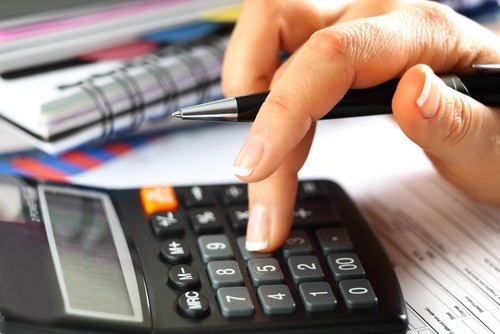Providing mileage allowance for employees who drive for work has become more popular in recent years. But with HMRC’s many rules, it can be confusing for employers and employees alike how this process works. This article will guide you through the main rules you should be aware of as an employer paying out mileage allowance, as an employee receiving the payments, and as self-employed – claiming deductions.
Mileage allowance for employees
My employees use their private vehicles for travelling for business. Do I have to provide them with mileage allowance payments?
As an employer, you are not obliged to pay a mileage allowance to your employees. However, many choose to reimburse their employees for business mileage, as anything paid under or at the same level as the approved mileage rates from HMRC is not reported to the authority.
Your company can choose to pay the exact amount of mileage allowance as stated by HMRC, less or more than it.
If you pay more per mile than the approved rate, the excess sum will be considered as personal benefits for your employee and they’ll have to pay tax on that amount.
To pay out MAPs (mileage allowance payments), your employees should hand in a mileage log, documenting their business travel for the month in line with HMRC requirements.
It is important to keep the provided mileage logs on file. If your company is audited, you’ll likely have to prove that you paid the correct amount of mileage allowance to your employees.
>See also: 8 of the best electric cars for small business leasing
How do I know how much mileage allowance to pay my employees?
You can pay your employees any mileage allowance you wish. However, the recommended rate is 45p per mile (HMRC, 2023).
It is also important to note that a rate higher than 45p per mile will be rates on excess.
So, if your employee drives 70 miles you can figure out their mileage allowance using this equation:
70 x 0.45 = 31.5
What should my employees know about mileage allowance?
Employees should know if they are paid MAPs by you and at what rate per mile. It is important they are familiar with HMRC’s requirements for a mileage logbook too.
Your employees should be aware that depending on the rate you reimburse them with, they might have to pay tax or be able to claim a tax deduction.
You pay your employees a mileage allowance based on HMRC’s approved mileage rates:
In this case, employees receive the full amount of mileage allowance. They will not be taxed additionally and they cannot claim a tax deduction on their business driving.
You pay your employees less than the rate approved by HMRC:
If employees are paid less, they are not taxed on the amount they’ve received for driving, and they can claim Mileage Allowance Relief (MAR).
You reimburse your employees more than the approved HMRC rate per mile:
Any payments over the approved amount per mile will be considered a personal benefit for your employees and it will be taxed as income.
What tax deduction do my employees get if I don’t reimburse them for their business mileage with the full amount?
Your employees can claim Mileage Allowance Relief (MAR). MAR is based on HMRC’s advisory rates. If you reimburse your employees with 45p per mile, they will be able to claim an extra 5p for each mile driven that year as tax relief.
Mileage allowance for self-employed
I am self-employed. What rules do I follow when I’m driving for my business?
As self-employed, you can claim mileage with one of two different methods – simplified vehicle expenses, or actual vehicle costs.
Claiming mileage with the actual vehicle costs method means you’ll have deductions for every penny you’ve spent on business mileage for the year. You should keep all receipts of your business travel spending. Vehicle costs you can claim include:
- Fuel
- Insurance
- Car maintenance and servicing
- Breakdown cover
- License fees
- Parking
This method might be beneficial for you if your vehicle expenses are high due to e.g. expensive insurance or road tax. Keep in mind it can be a time-consuming way of preparing for your annual tax claims.
The simplified expenses method is great for avoiding lengthy calculations and receipt collection. With it, you use a flat rate set by HMRC to calculate your mileage allowance claim. The flat rate covers all vehicle costs for your business driving such as fuel, maintenance, depreciation, insurance, road tax etc.
Other expenses you can claim
As a self-employed person, you can also claim any accommodation and meals, as well as travel with other vehicles (e.g. airfares) when on a business trip.
How to claim mileage allowance as self-employed
No matter which method you choose for claiming mileage expenses as self-employed, you can claim it through your self-assessment tax return. You won’t need to submit any proof of the claim but keep your receipts and mileage logs for five years in case of an audit.
What are the current mileage rates set by HMRC?
The mileage rate set by HMRC has remained the same since 2011. This has not changed for over a decade, which is astonishing, given inflation and higher living costs. The current mileage rates are used for both mileage relief for employees and mileage deductions for self-employed.
The rates for 2023 are as follows:
- Cars and vans – 45p for the first 10,000 miles, 25p for every mile over 10,000 driven miles for business
- Motorcycles – 24p per mile regardless of the miles driven
- Bicycles – 20p per mile regardless of the miles driven
What should a logbook contain, according to HMRC’s requirements?
A mileage logbook is considered HMRC-compliant if it includes the following information:
- The date of the trips
- The start and end address of each trip, including postcodes
- The distance driven
Additional for employees:
The total amount of mileage allowance that your employer has paid out to you.
How do I keep an accurate logbook?
There are a few options for keeping a logbook – on paper, as a spreadsheet, or through an app. Paper logs and spreadsheets require you to manually input the needed information about your mileage. Using a mobile application has become popular in recent years for the ease of not having to do exactly that. Driversnote, for example, is available on both AppStore and Google Play.
Mobile applications use GPS to track your driving and automatically create a logbook. If choosing an app, look for one that creates HMRC-compliant records that can be used for both mileage allowance payments and mileage allowance relief.
To learn more about mileage allowance, go through this HMRC mileage guide, or visit HMRC’s website.
Katerina Nikolova is a marketing and communications specialist at Driversnote




